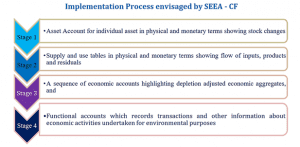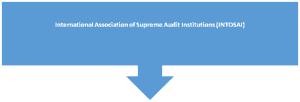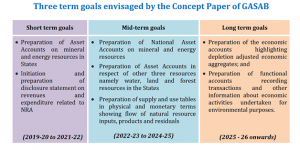THE CONTEXT: The 2022 edition of the World Population Prospects (WPP) of the United Nations has projected that India may surpass China as the world’s most populous country next year. The report estimates that India will have a population of 1.66 billion in 2050, ahead of China’s 1.317 billion around that time. In its previous estimate, the UN had projected that India would overtake China by 2027.
DECODING THE UN REPORT ON POPULATION TRENDS, ESTIMATES
POPULATION GROWING AT A SLOWER PACE
- The world population will reach eight billion by mid-November this year, growing to around 8.5 billion in 2030 and 9.7 billion in 2050.
DISPARATE POPULATION GROWTH RATES
- More than half of the projected increase in global population up to 2050 will be concentrated in eight countries the Democratic Republic of the Congo, Egypt, Ethiopia, India, Nigeria, Pakistan, the Philippines and Tanzania.
- India is projected to surpass China as the world’s most populous country in 2023 due to the difference in population growth rates.
- It is projected to have a population of 1.668 billion in 2050, compared to China’s 1.317 billion people.
ELDERLY POPULATION
- The global population of people aged 65 years or above is projected to rise to 16 per cent in 2050 from the current 10 per cent.
- By 2050, the elderly population will be more than twice the number of children under the age of five.
LIFE EXPECTANCY, FERTILITY AND MORTALITY
- Global life expectancy at birth reached 72.8 years in 2019, an improvement of almost nine years since 1990.
- Life expectancy at birth for women exceeded that for men by 5.4 years globally, with female and male life. expectancies at 73.8 and 68.4, respectively.
- However, the gap in life expectancy at birth in some countries remains wide. Average global longevity to be around 77.2 years in 2050 due to further reduction in mortality levels.
- Global fertility is projected to decline to 2.1 births per woman by 2050.
INTERNATIONAL MIGRATION AS A DETERMINANT OF POPULATION CHANGE
- Population change is significantly affected by migration. As many as 10 countries saw an outflow of more than one million migrants each between 2010 and 2021.
- While Pakistan topped the list with a net outflow of 16.5 million, 3.5 million moved out of India over the decade.
IMPACT OF COVID ON POPULATION
- The COVID-19 pandemic has left a mark on all components of population change, including fertility, mortality and migration.
- Global life expectancy at birth fell to 71 years in 2021 from 72.8 in 2019, mostly due to the impact of the coronavirus pandemic.
- In Central and Southern Asia and Latin America and the Caribbean, life expectancy at birth fell by almost three years between 2019 and 2021.
ASPECTS OF THE INDIAN POPULATION
Rural-Urban Divide
The fertility rate in rural areas is much higher than that in urban areas.
Gender Divide
Indiacontinuestosufferfroma genderdivideduetothepreferenceformale children.Thus,the no.of males is far higher than females in India.
State-State Divide
Therearehugedisparitiesbetweenthestates.For example,the fertility rate is 1.6 in Tamil Nadu and West Bengal and 3.3 in Bihar and 3.1 in Uttar Pradesh.
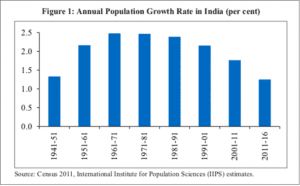
CAUSES OF POPULATION GROWTH IN INDIA
The rapidly increasing population of India is a result of prevailing high birth rates and a large decline in the death rate in our country. According to the World Bank data, the Crude Death Rate (per 1000 people) in India is 7.265 as of the year 2019. While the Crude Birth Rate stands at 17.664. The census data 2011 put these as 7.2 and 22.1 respectively.
CAUSES FOR HIGH BIRTH RATE
In India, marriage is not only universal but takes place at an early age. About 80 per cent of girls are married during the most fertile period of 15 to 20 yrs. of age.
Poverty means poor people have to spend little on the upbringing of their children. Besides, the children supplement the family income by engaging themselves in some odd jobs at an early age.
Lack of conscious family planning had also kept the birth rate in India very high.
In India, religion plays a major role in large size families. Abrahamic faith largely supports large family sizes. Even after so many girls in the family, the desire for one son prompts parents to continue with their child-producing activities.
The infant mortality rate is very high in India due to hunger, malnutrition and poor living conditions. So the fear of early death of their infants encourages the parents to have more children.
CAUSES FOR DECLINE IN DEATH RATE
Epidemics such as plague, smallpox, TB and malaria, which at one time used to cause a toll of heavy deaths, now have been effectively controlled.
The percentage of the population living in towns and cities went up from 26% in 1991 and 31.16%in 2011. Better health, hygiene and sanitation facilities in the town are expected to have lowered the death rate.
Literacy among women is progressing rapidly. Educated women bring up their children with utmost care. Working women enjoy better economic status and as such, they are healthier.
Besides the famine of 1943, no other serious famine has occurred in this century. Although famine-like conditions emerged in 1987 in the states of Gujarat, Rajasthan, Haryana, Bihar and Madhya Pradesh yet these were effectively combated to cause any serious loss of life.
Disaster Management has become part and parcel of the Indian governance process. Physical, Technological and Human infrastructure have been created to prevent and mitigate the loss of lives from disaster.
BENEFITS OF INCREASING POPULATION
Young Population
While the nations all across the world are getting old, India is emerging as a young nation.Thus, the Indian young population is in high demand for its skill and age by the developed nations so as to maintain their economic growth.
Development of Business and Enterprises
The young population of India can help with the development of businesses and thus contribute to the nation’s growth.
Solving National Problems
Youngs killed workforce of India can solve national problems through innovative solutions as recognised by the government too while conducting Hackathons.
CHALLENGES OF POPULATION GROWTH IN INDIA
- The problem of Capital Formation: High birth rate and relatively high expectancy of life mean a large number of dependents in the total population. The burden of dependents reduces the capacity of the people to save. So the rate of capital formation falls.
- Effect on Food Problem: Rapid rate of growth of the population has been the root cause of the food problem.Shortage of food grains obliges the under-developed countries to import food grains from abroad. So a large part of foreign exchange is spent on it.
- The problem of Unemployment: Large size of population results in disguised unemployment in rural areas and open unemployment in urban areas.
- Poverty: Rising population increases poverty in India. People have to spend a large portion of their resources for bringing up their wards. Hence improvement in production techniques becomes impossible. It means low productivity of labour.
- Population and Social Problems: The population explosion gives rise to a number of social problems. It leads to the migration of people from rural areas to the urban areas causing the growth of slum areas. People live in most unhygienic and unsanitary conditions.
- More Pressure on Land: Due to rising population per capita availability of land goes on diminishing and the problem of sub-division and fragmentation of holdings goes on increasing
- Impact on Maternity Welfare: In India, the population explosion is the result of a high birth rate, which reduces the health and welfare of women. Frequent pregnancy without having a gap is hazardous to the health of the mother and the child. This leads to a high death rate among women in reproductive age due to early marriage.
POPULATION CONTROL POLICIES IN INDIA: AN OVERVIEW
Population policy may be defined as deliberately constructed or modified institutional arrangements and/or specific programs through which governments seek to influence, directly or indirectly, demographic change.A positive population policy aims at reducing the birth rate and ultimately stabilising the growth rate of the population.The population policy of the Government of India has passed through the following phases from time to time:
Pre-Independence Period:
The British did not consider population growth as a problem. Their attitude towards birth control was one of indifference because they never wanted to interfere with the values, beliefs, customs and traditions of Indians. That is why this phase is called the Period of Indifference.
The Period of Neutrality, 1947-51
The period following independence and before the beginning of the planning era was one of neutrality. The Government of India was busy with post-independence problems like rehabilitation of the people following the Partition, reorganisation of the States and Pakistan’s invasion of Kashmir.
The Period of Experimentation, 1951-61:
During the first decade (1951-61) of planned economic development, family planning as a method of population control was started as a government programme in India. The National Family Planning Programme was launched in 1952 with the objective of “reducing the birth rate to stabilise the population at a level consistent with the requirement of the national economy”.
The Beginning of the population Control Policy 1961 to 2000:
With the rapid growth of the population in the 1961 Census by 21.5 per cent, the Extension Approach to family planning was adopted which emphasised the adoption of an educational approach to family planning through Panchayat Samitis, Village Development Committees and other groups. The National Population Policy was announced in 1976 to mount “a direct assault on the problem of numbers. In the post-emergency period, the Janata Government announced a New Population Policy in 1977.
National Population Policy, 2000:
National Population Policy (NPP) 2000:The immediate objective is to address the unmet needs for contraception, health care infrastructure and health personnel etc. The medium-term objective is to bring the Total Fertility Rate (TFR) to a replacement level by 2010. The long-term objective is to achieve a stable population by 2045. The Central Government has set up a National Commission on Population (NCP) in 2000 to review, monitor and guide NPP implementation. It is presided over by the Prime Minister with CMs of states and others as members.
WOMEN’S REPRODUCTIVE RIGHTS AND POPULATION CONTROL
There are many unintended consequences of India’s family planning policy and programmes heavily impacting the rights of women. The various dynamics of this issue are outlined below.
PATRIARCHAL ATTITUDE
Gender norms in our patriarchal society dictate economic responsibilities to men and reproductive responsibilities to women. This is reflected in how family planning measures are used in India: which is heavily skewed towards female sterilization.
GENDER IMBALANCE
In 2015, of all married people in the reproductive age group, only 47.8% used any modern method of contraception (NFHS 4). Among the people who used contraception, 88% were women – 75% women underwent female sterilisation – whereas, of the 12% male contraceptive users, only 0.6% underwent male sterilisation.
MISSING MALE SEGMENT
The efforts for population control have mostly translated to controlling women’s, and not men’s, fertility. The program is designed to cater only to women and doesn’t actively engage with men to increase their participation in sharing the burden of family planning. The National Health Policy 2017, released by the Ministry of Health and Family Welfare, aims to increase the uptake of male sterilisation to up to 30% but offers no roadmap to implement it nor to tackle gendered challenges that persist in the health system.
ADMINISTRATIVE/POLICY FLAW
According to the National Health Mission Financial Management Report 2016-17, the total expenditure on family planning in 2016-17 was Rs 577 crore, of which 85% was spent on female sterilisation alone, and only 2.8% on male sterilisation.
VIOLATION OF WOMEN’S RIGHTS
The incident in Bilaspur, Chhattisgarh, in November 2014 highlighted how women from lower socioeconomic groups were sterilised in a camp without proper infection control, leading to severe complications in many women and the death of 15. The Supreme Court of India has highlighted that 363 women, largely from rural and marginalised communities, died between 2010 and 2013 during or after surgery in sterilisation camps, and ordered the government to shut these camps down.
BUT CONDITIONS-BASED POPULATION CONTROL ARE NOT A GOOD IDEA
- Empirical Study: A study by former Madhya Pradesh chief secretary Nirmala Buch on laws restricting the eligibility of people with more than two children in Andhra Pradesh, Haryana, Madhya Pradesh, Odisha and Rajasthan concluded that the two-child norm violates the democratic and reproductive rights of individuals. A high number of women (41 per cent) among our respondents faced disqualification for violating the two-child norm. Among Dalit respondents, this proportion was even higher (50 per cent).
- NHRC observations: The incentives/disincentives approach has been denounced in the past by the National Human Rights Commission after such measures were introduced by several States in the 1990s and 2000s, i.e., Haryana, undivided Andhra Pradesh, Madhya Pradesh, Rajasthan, Chhattisgarh and Odisha.
- Wrong Policy Focus: India is on the path to stabilising its population. Therefore, the stress on the introduction of punitive measures to ensure population control is misplaced. In fact, a few states that imposed restrictions in various forms to enforce the two-child norm are on the back foot now. Four of the 12 states which introduced the two-child norm have already revoked it.
- Exclusion of the poor: Poverty is a major reason for the poorer sections having a larger number of children. By putting conditions like limiting government benefits and participation in electoral democracy to persons having not more than two children, the poor becomes both economically and politically excluded.
- International Experience: After China revised its two-child policy recently, the Population Foundation of India issued a statement saying that India must learn from China’s failed experience with enforcing coercive population policies. It said religion has little to do with fertility levels but what makes the difference is “education, employment opportunities and accessibility of contraceptives”.
- Population Momentum: Despite the decline in fertility, the population keeps growing. Demographers call this the “population momentum”. It is important to understand that even if all the couples in UP were to have two children from tomorrow, the population will continue to grow. This is because of the large number of young people in the state. Unlike in the past, the population is growing not because couples have more children, but because we have more young.
- Women’s Rights: Explained Above.
WHAT MUST BE DONE?
EMPIRICAL EVIDENCE FROM STATES
Kerala and Punjab have 1.6 TFR, while Bihar and Uttar Pradesh have 3.4 and 2.7 TFR respectively (NFHS 4). NFHS-4 data shows only 22.8 per cent of women in Bihar attended school for 10 or more years in 2014-15. In neighbouring Uttar Pradesh, the figure was 32.9 per cent. In contrast, 72.2 per cent of women in Kerala attended school for 10 or more years, while the figure was 55.1 per cent in Punjab. So schooling plays a vital role In TFR. The proper implementation of the Beti Bachao Beti Padhao scheme can be a game changer.
REDUCTION IN CHILD MARRIAGES
NFHS-4 data shows an increase in TFR in states with a high number of child marriages. So increasing the age of marriage can help reduce the TFR. Strict implementation of the Prohibition of Child Marriage Act 2006 along with social persuasion and influence can help in this regard.
AVAILABILITY OF CONTRACEPTIVES
From 1998-99 to 2005-06, TFR declined from 2.9 to 2.7. During this period, the country witnessed a change in social mindset. The use of contraceptives increased by 13.3 per cent. Studies by the Population Foundation of India point out the lack of availability of contraceptives both for men and women. Thus reliable access to contraceptives through ASHA workers at the local level need to be ensured.
CHECK UNPLANNED PREGNANCIES
Devendra Kothari, former professor at the Indian Institute of Health Management Research University, Jaipur attributes India’s current population growth to unplanned pregnancies. Based on NFHS 1 to 4, it is estimated that 135 million out of 430 million births were the result of unplanned pregnancies. So proper planning and spacing of pregnancies are required.
WOMEN EMPOWERMENT
According to the NFHS-4 data, the women in the lowest wealth quintile, and the least educated women, had on average one more child than those with more than 12 years of schooling and in the highest wealth quintile. Thus holistic women empowerment through instruments like “Gender Budgeting” and schemes like Stand Up India, and Promotion of SHGs by National Livelihood Missions must be implemented earnestly.
ADHERENCE TO CAIRO CONSENSUS
The Cairo International Conference on Population and Development in 1994, of which India is a party (The Cairo Consensus) has called for promotion of reproductive rights, empowering women, universal education, and maternal and infant health to untangle the knotty issue of poverty and high fertility.
THE WAY FORWARD
- China’s example of a distorted demography (age-sex composition of the population) is a warning against a counter-productive population control bill. Public health matters shouldn’t be coercive in nature.
- When reproduction is controlled or forced, there is a distortion in the working population and the elder-dependent population, which can lead to possibly disastrous economic consequences.
- In the case of Bihar and Uttar Pradesh too, a decentralized implementation of a family planning policy can bring about a gigantic change and a population control policy will do more harm than good.
- We need to invest heavily in human capital, health and education for a healthy and productive population that can add to the national and global accomplishments of the country.
THEORETICAL BACKGROUND: VIEWS OF PROMINENT THINKERS ON POPULATION
Many of the ancient philosophers like Confucius, Kautilya, Plato and modem thinkers like Adam Smith, David Ricardo and others have deliberated on population issues. For instance, Kautilya had written in his Arthashastra that a large population is a source of the political, economic and military strength of a nation. The Chinese philosopher, Confucius argued that a numerical balance is maintained between population and environment. Thus, he was not in favour of the unchecked growth of population. In ancient Greece, Plato advocated an absolute limit on population. In the modern period, Malthus and Marx have written elaborately on the population dynamics but their views, however, differed fundamentally.
MALTHUSIAN VIEWS
- In his Essay on the Principle of Population (1798), Malthus argued that because of the strong attraction of the two sexes, the population could increase by multiples, doubling every twenty-five years.
- He contended that the population would eventually grow so large that food production would be insufficient.
- Malthus further wrote ‘Population when unchecked increases in a geometrical ratio. Subsistence increases only in an arithmetical ratio.
- Malthus referred to two classes of checks which kept population down
- Positive Checks: He spoke of famine, disease, war, pestilence etc(Related to Mortality)
- Negative Checks: artificial means of birth control, late marriage, moral restraint, and chastity(Related to Fertility)
- He contended that without such restraints the world would face widespread hunger, poverty and misery.
- Malthus saw the tension between population and resources as a major cause of the misery of much of the humanity.
MARXIAN VIEWS
- According to Marx, the widespread poverty and misery of the working class people were due to the misconceived organization of society.
- He argued that starvation was caused by the unequal distribution of wealth and its accumulation by capitalists.
- It has nothing to do with the population.
- The population is dependent on economic and social organization.
- The problems of overpopulation and limits to resources are inherent and inevitable features associated capitalist system of production.
- If people experience an increase in their income, they are likely to reduce their fertility rate instead of increasing it, as they see that new opportunities are available to their child (for example going to school)
- Marx believes the low wages of the capitalist system do not give workers this incentive to decrease their fertility and the population growth further increases the labor supply and depresses wages.
- Thus, according to Marx, overpopulation is a normal characteristic of capitalism.
THE CONCLUSION: The small Indian landmass is not sufficient enough to look after the increasing population. If we continue our rise in a current manner, we will not be able to achieve any of the SDG targets, particularly SDG 1, 2, 3 and 4. We need to ensure that the increasing population momentum is reduced through awareness and incentives while skilling the workforce so as to make them really part of the dividend.
QUESTIONS TO PONDER
- The population control measures of the government of India display an inherent gender bias. Elucidate.
- Critically examine the need for a course correction in India’s population control policy in the light of new legal regimes brought in by states for checking population growth.
- “Overpopulation in various countries has become a serious threat to the well-being of many people and a grave obstacle to any attempt to organise peace on this planet of ours.” Examine.
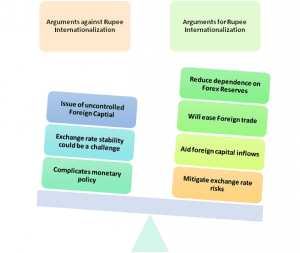
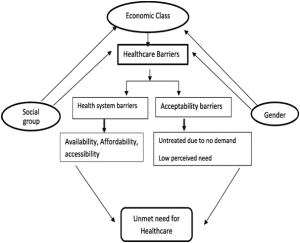
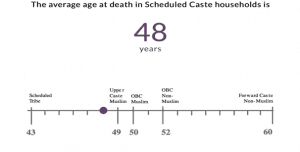
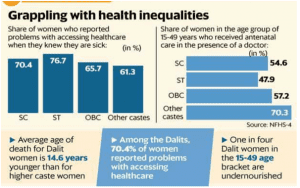
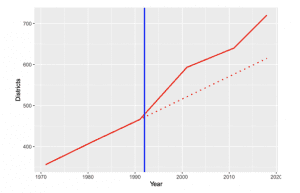
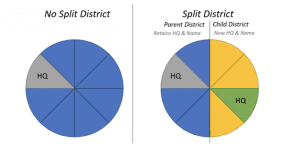




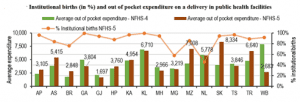
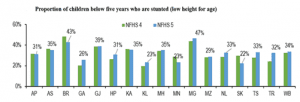



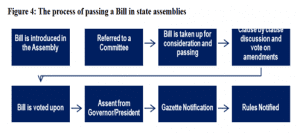


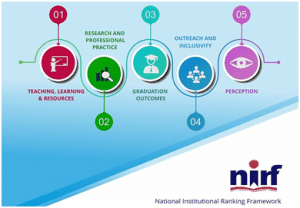



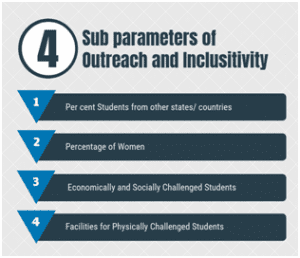


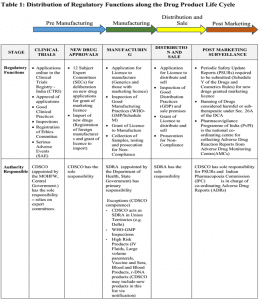
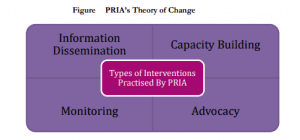

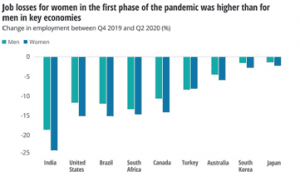



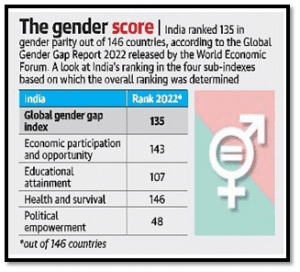
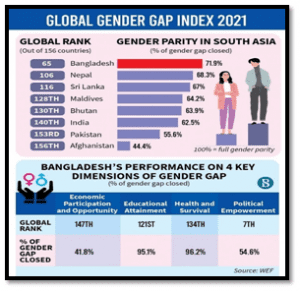

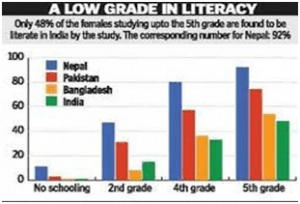

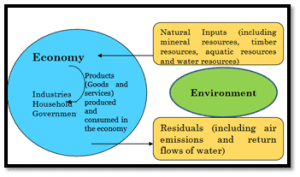 elements of SD is that it provides an outline of resource bases, and pace of usage with an eye on their sustainability and embeds environmental aspects into the economic indices.
elements of SD is that it provides an outline of resource bases, and pace of usage with an eye on their sustainability and embeds environmental aspects into the economic indices.